“We had spent one night at Kayenta. No one could be even that short a time in the Wetherills’ house, hearing them talk, seeing the beautiful things hanging on their walls, without catching some of the riches to be found among the Navajos and being stimulated to some desire to learn for himself.”
—Oliver La Farge, recalling his 1921 visit to Kayenta
In the northern Navajo country, about twenty miles south of the Utah border, is the bustling town of Kayenta, Arizona. In some respects, it is typical of many other such communities—a hodge-podge of homes and businesses, and a place where life goes on from year to year in the usual way. Unapparent to most observers, however, is a deep, underlying quality that transcends the conventionalities of modern times. The rich character of the town was shaped by a unique history, reaching back to its founding more than a century ago. A study of the experiences of some of the early visitors, who were profoundly affected by their sojourns there, reveals the reasons for the town’s strength.
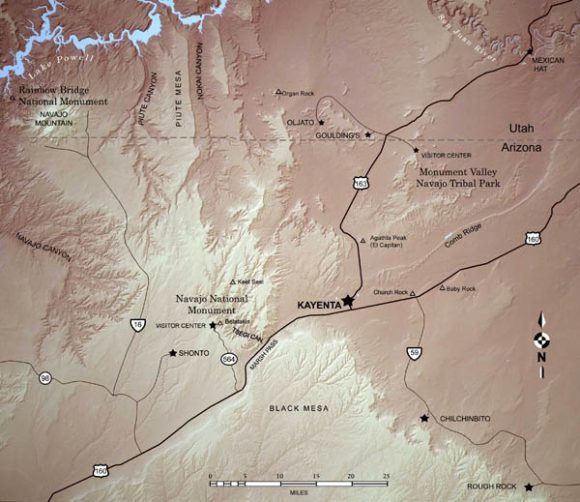
In May of 1921, Samuel J. Guernsey, assistant director of the Peabody Museum, arrived in the western Navajo district with three Harvard men (a fourth would join them later) to conduct an archaeological research project. One of the students, nineteen-year-old Oliver La Farge, immediately became dispirited by what he saw.
Upon reaching the trading post at Cameron, Arizona, La Farge was taken aback by three Navajos who came into the store. “These men must be the real article, the savages of the hinterland,” he recounted in his book, Raw Material. “They wore ragged work clothes, two of them had battered hats, the third, a dark, dirty headband. I remember the contrast of the bright turquoise in their ears, but nothing else was picturesque about them, they were merely shabby and surprisingly dark. I had had an idea that Indians were a rather light, bronze colour. These men seemed purple. I found their expressions expressionless and stupid.”
The group traveled from there to Tsegi Canyon, a sight that is, by almost all accounts, stunningly beautiful. La Farge found it otherwise, denigrating it as “a howling ash-heap”. “Its mile-wide floor was arid, useless. Its cliffs were too aggressive, the spruce and fir up in the crannies were a cheat. The heat danced on the flat and echoed off the walls.”
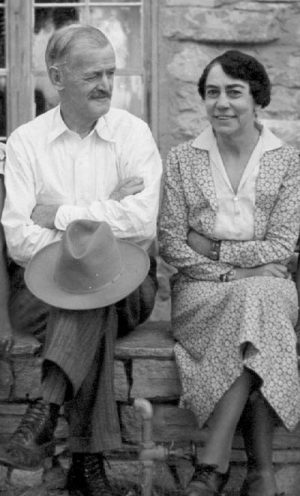
Their next destination was Kayenta. At the trading post and home of John and Louisa Wetherill, the young Oliver suddenly awoke to a world of new possibilities. Conversations with his hosts and perusal of the Native American handiwork on display throughout their house enlivened him to the outstanding beauty of his surroundings.
La Farge’s new vision revealed to him the allure of the native residents. “These Indians in the northern part of the reservation were quite different from the ones I saw at Cameron,” He proclaimed. “As a matter of fact, I’ve never seen those purple ones again, they seem to have appeared out of nowhere that first day, a different race, to disappear again forever…. The Indians had got me.” He later described their traits that most impressed him: “By and large, the Navajos liked the way they were living, they felt secure, they enjoyed life, they knew how to have fun, they were wonderfully friendly.”
La Farge also saw the landscape in a new light. “Our camp was on a sandy knoll in the shade of some Maxfield Parrish piñon trees under a Maxfield Parrish sky,” he extolled. “I began to see the country with a rush and to know that it was beautiful and that I loved it.” He resolved to change his major from archaeology to ethnology and to focus his future studies on the Navajos. The pinnacle of his successful career was the publication, in 1929, of his novel, Laughing Boy, about a young Navajo man and the woman he loved. The book was awarded a Pulitzer Prize in 1930.
La Farge was just one of the many early visitors to Kayenta who found their stays there enlightening. Their stories are found in books, magazine and newspaper articles, and archival documents, but also in the pages of the register books that the Wetherills asked their guests to sign. Two volumes survive, dating from 1919 to the early 1940s and containing thousands of entries. (Unfortunately, an earlier volume was stolen from the Wetherill home and has yet to resurface.) They are now used to help elucidate the history of Kayenta during its early days.
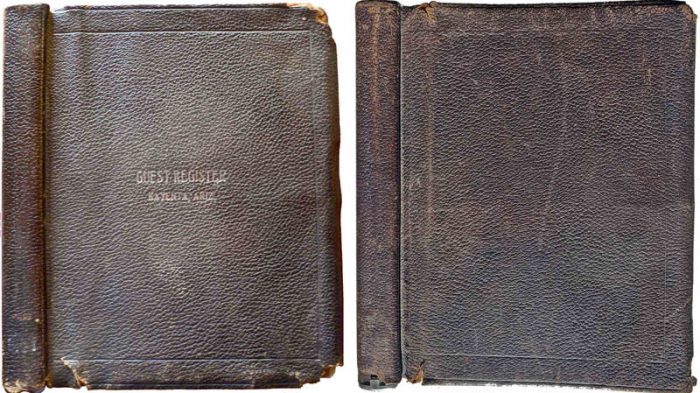
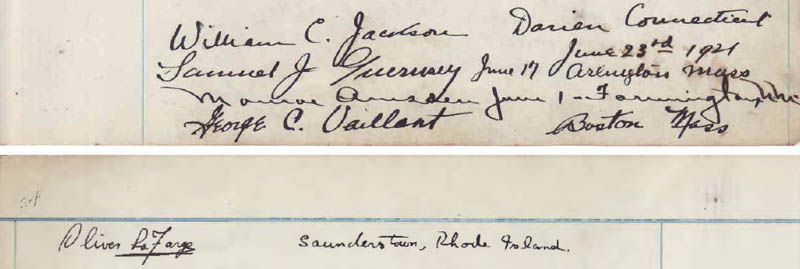
From ancient times, Native Americans lived in the area. The Ancestral Puebloans resided in pit-houses, cliff-dwellings, and pueblos. They were succeeded by Paiutes and Navajos, or Diné, whose traditional homes were hogans. A notable pioneer resident was a respected Navajo man named Yellow Singer.
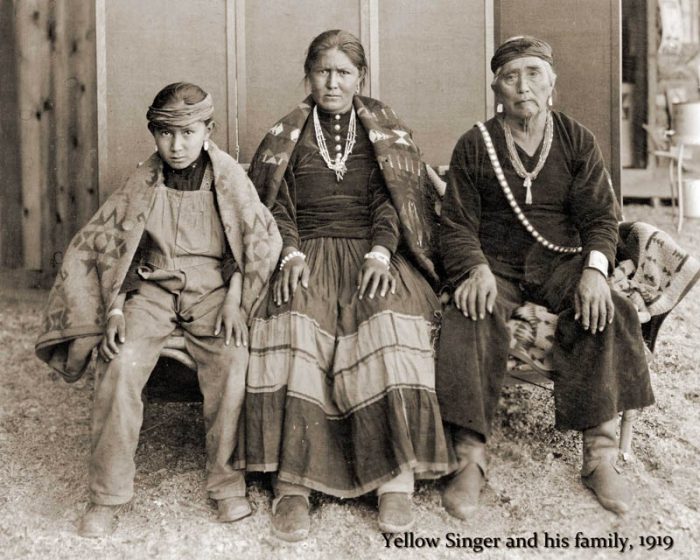
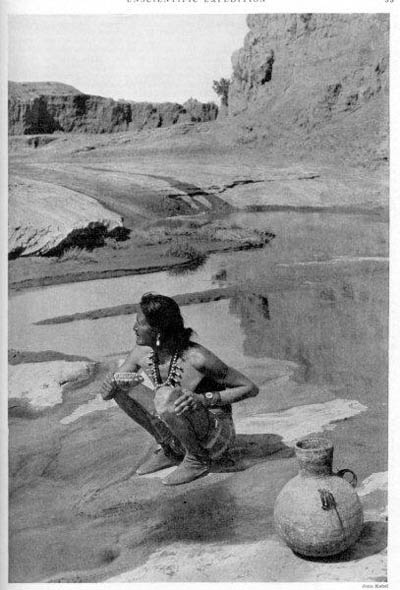
By 1910, the Indian Service began calling the area “The Kayenta District”. “Kayenta” is a rough, anglicized construal of the Navajo word, Téé’ndééh, which Louisa Wetherill interpreted as “animals fall into deep water”.
The Wetherills and their business partner, Clyde Colville, had, in 1906, settled in the remote northern Navajo country at Oljato, Utah, west of Monument Valley, where they built a house and trading post.
(See my article, “A Home on the Desert: Establishment of the Wetherill & Colville Trading Post at Oljato, Utah in 1906” in the October/November 2019 Canyon Country Zephyr).
In December of 1910, they moved their operation south across the Arizona border to a place the Navajos called Tó Dínéeshzhee’—“where water comes out of the hill like fingers”. The government officials insisted on a simpler name for the post office that was to be established there, so “Kayenta” was chosen, even though the settlement is some distance from the bog hole of that name.
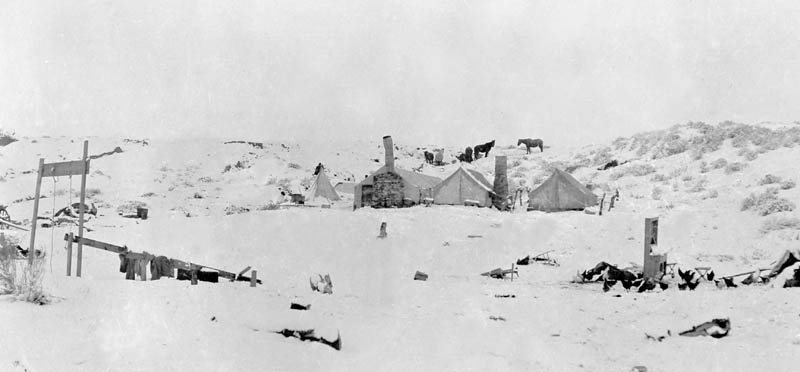
The Wetherills soon replaced their tents with substantial buildings—a house and trading post. Down through the years, they enlarged and decorated their home and transformed it into the gracious, comfortable lodge that La Farge and countless others stayed in and so admired. Extra beds accommodated guests, and Louisa served meals in a large dining room, much in the manner of an early-day bed and breakfast. After-dinner discussions often took place in the museum-like living room where Louisa would talk about what she had learned from her Navajo friends and John would tell stories about his explorations in the rugged outback and the archaeological treasures and scenic wonders he had seen there.
A budding anthropologist, Clyde Kluckhohn, described the after-dinner scene on his first visit to Kayenta in 1923:
The pleasant fire in the fireplace set the tone for the general atmosphere. All the cow-punchers and Wetherill employees gathered together with the family, the celebrities, the travelers, to enjoy such good-natured joking and often something of a rough-house among the punchers. And the tales that were told—the cow-punchers told of the fun and hardships of their life…, Mr. Colville of interesting travelers who had come to Kayenta. But Mrs. Wetherill excelled as story-teller—all manner of interesting and thrilling experiences encountered while traveling on the reservation, curious customs of the Navajos, their wonderful legends.
The family gained a reputation for their hospitality and kindness to visitors—Indians and non-Indians alike. A traveling salesman from Denver who supplied hats to the trading posts called their place “the House of Welcome”.
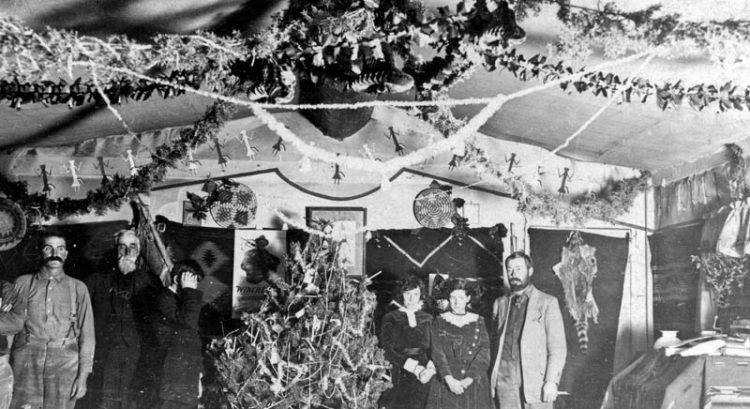
The earliest visitors were most often itinerant prospectors, archaeologists, and geologists. Following the establishment of Navajo National Monument in 1909 and Rainbow Bridge National Monument in 1910, increasing numbers of recreational adventurers came to Kayenta asking John to guide them to those attractions. Just getting to Kayenta was an adventure in itself, involving an arduous, multi-day trip over rugged trails by horse, wagon, or buggy. From there, John would provide a pack train of horses and mules to carry the explorers, their luggage, camping gear, and food supplies far into the wilds.
One of the Wetherills’ early guests was the renowned author, Zane Grey, who first went there in 1913. He was desirous of seeing Rainbow Bridge, both for the adventure and to gather ideas for a new novel. Despite its isolation and primitiveness, Grey was enchanted by the scene. On a later trip he recounted in the guest register his impressions of his first visit there.
It was in the heyday of its existence, colorful, bustling, primitive, beautiful, dominated by the splendid spirit of the pioneer Wetherills.
Navajos and Piutes bestrode their shaggy mustangs or lolled in the post… heaps of wool lay scattered around…hides littered the slabstone floor; flocks of sheep and goats passed by shepherded by Indian boys…with their half-wild dogs; dark moving riders were silhouetted at sunset against the gold of the horizon.
Peace and prosperity and happiness pervaded Kayenta. Lore of the Indian and service to him!
Accompanying Grey on his 1913 visit was his wife’s cousin, thirty-year-old Lillian Wilhelm. She was an artist, and Grey wanted her to see the country first-hand so she could illustrate his upcoming book. She was destined to be a frequent visitor to Kayenta, a dear friend of the Wetherills, and the creator of many paintings that depict the beauty of the region.
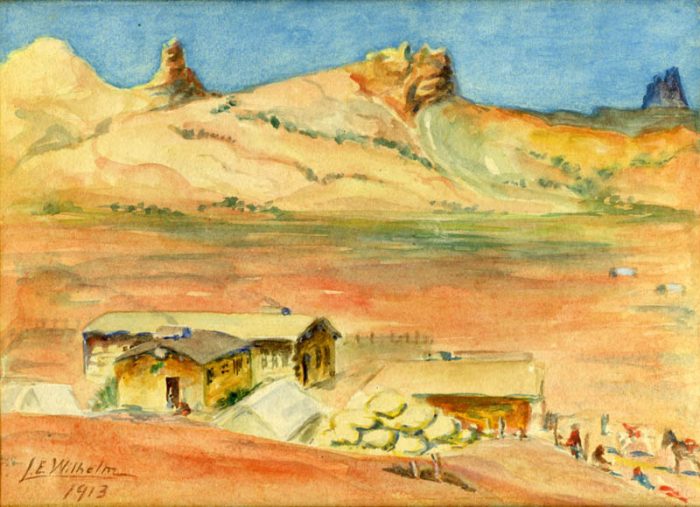
A few months later, former president Theodore Roosevelt, sons Archie and Quentin, and cousin’s son Nicholas arrived in Kayenta, also desirous to go to Rainbow Bridge. “Our new friends were the kindest and most hospitable of hosts,” TR wrote, “and their house was a delight to every sense: clean, comfortable, with its bath and running water, its rugs and books, its desks, cupboards, couches and chairs, and the excellent taste of its Navajo ornamentation.” For more on that visit, see my article, “The President Slept Here: Theodore Roosevelt’s 1913 Visit to Kayenta and Beyond,” in the August/September 2019 Canyon Country Zephyr.
Kayenta was not opened up to automobile travel until 1915 when, with considerable labor, the wagon road from the southwest was improved. However, for many years after that, the journey to the Wetherills’ outpost remained precarious.
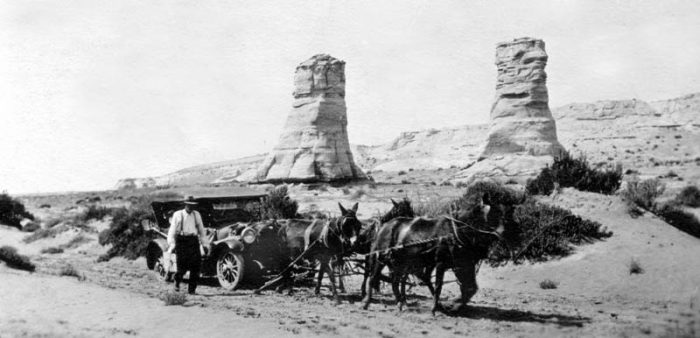
For many, the automobile ride was only the beginning of the adventure, however. “Kayenta is a gateway, like Thibet, to the Unknown,” wrote Winfred Hawkridge Dixon, who motored there in 1919. “It is a frontier, perhaps the last real frontier in the States. Only Piutes and Navajos brave the stupendous Beyond.”
Early visitors to Kayenta were impressed by at least three things—the Wetherills, Native Americans of the past and present, and the stunning, wild, pristine natural surroundings. Guests expressed their reactions to their experiences in both words and images.
Zane Grey used his 1915 novel, The Rainbow Trail, to capture some of his real-life experiences from the 1913 trip. He cast John and Louisa Wetherill as the fictional Mr. and Mrs. Withers, but his descriptions of them and their home ring true:
Withers led Shefford by the first stone house, which evidently was the trading-store, into the second. The room Shefford entered was large, with logs smoldering in a huge open fireplace, blankets covering every foot of floor space, and Indian baskets and silver ornaments everywhere, and strange Indian designs painted upon the whitewashed walls. Withers called his wife and made her acquainted with Shefford. She was a slight, comely little woman, with keen, earnest, dark eyes. She seemed to be serious and quiet, but she made Shefford feel at home immediately.
Poetry was the medium of choice for some of the visitors. “Well I remember and always will, John and Louisa Wetherill,” wrote Witter Bynner of Santa Fe in the guest register on May 12, 1924.
A lesser-known poet was Mildred Kaye Smith of New York. She accompanied Zane Grey to Kayenta in 1922 and also memorialized her impressions in the Wetherills’ book:
Some one said—
“Come, I know a place in the desert—
Love abides there, and peace—
And above whispering sand and sage
Come voices glad—and laughter.
And there the hearth is large and wide
And always there is room for one more traveler….
And though you come a stranger to the gate
You find yourself at once among good friends,
Full well assured that you had known them always.”
Eager and expectant then I came
Yet wondering if these words were partly chaff—
Now humbly I confess what I have learned—
The one who spoke had told me only half.
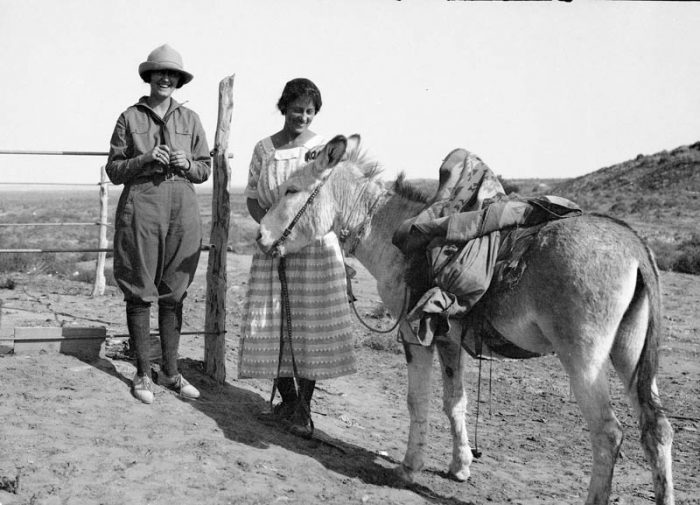
Years later, Mildred recorded her memories of Kayenta in the form of prose:
One of the habitual guests is writing this article, feeling as she writes the glow of hospitality in that charming desert home, recalling the color of that delightful last outpost where none of the staged effects of modern guest ranches intruded, where congeniality flowed with gracious ease and a guest was a member of the family. Hosts and hostess, cowboys and guests ate at one long table which could seat forty people. Day and night Indian ponies were tethered outside the post and the Navajos, men, women and children, made a holiday of their trading.
Other artists, such as Lillian Wilhelm, used the medium of paintings or sketches to express their feelings, and many of them used the pages of the guest register as their canvases. In August of 1922, cartoonist and painter Jimmy Swinnerton brought some of his eminent friends to Kayenta for a weeks-long sight-seeing tour and party. His entourage included his wife, Louise Schér, cartoonists George Herriman and Rudolph Dirks, painters Maynard Dixon and W. R. Leigh, photographer Dorothea Lange, and W. R. Leigh’s wife, fashion designer Ethyl Traphagen Leigh. Also present was Lillian Wilhelm, who was now Mrs. Robertson.
Below is a sample of their guest book entries, which testify to the inspirational power and beauty of Kayenta and its fascinating residents.
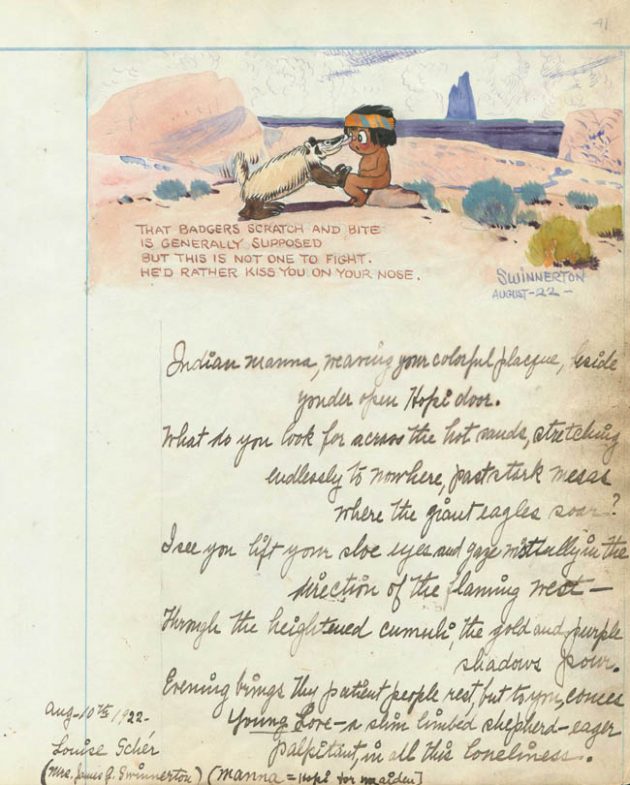
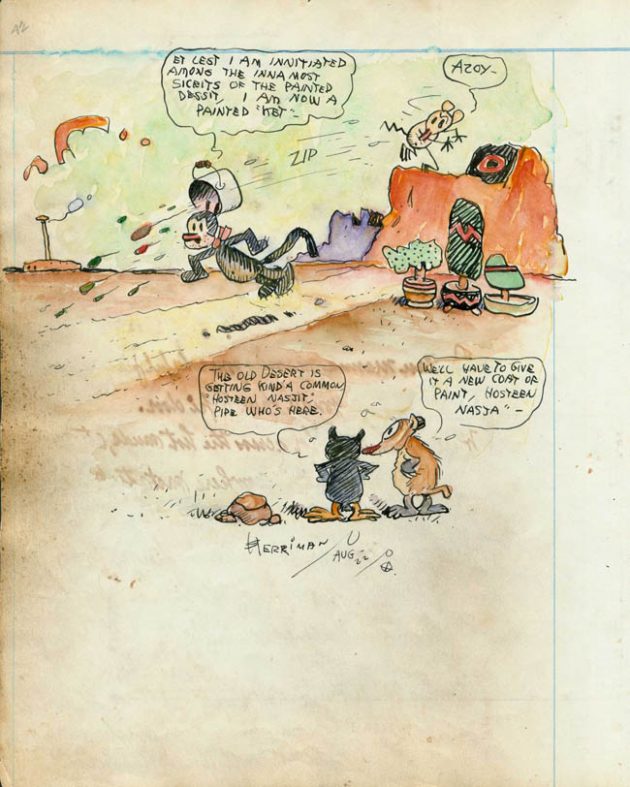
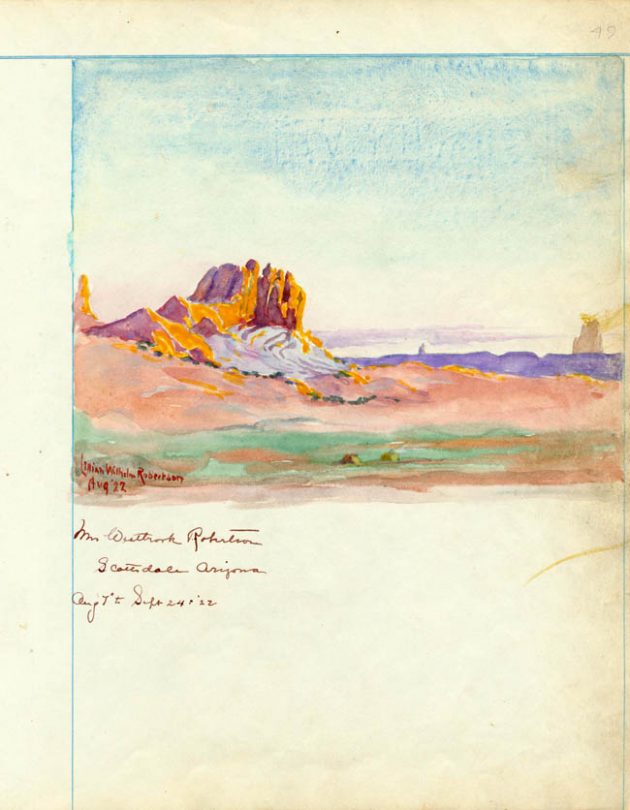
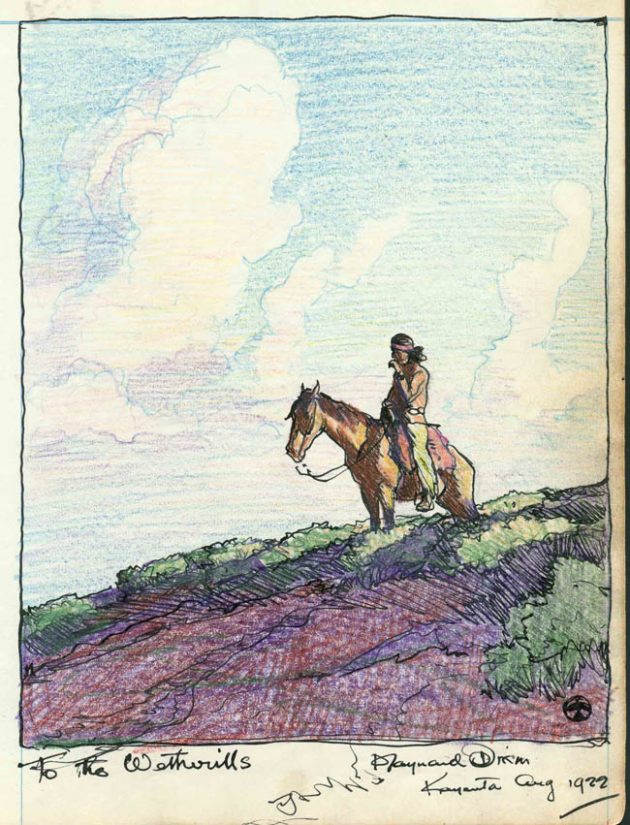
Throughout the next two decades, thousands of travelers passed through and recorded their presence in the Wetherills’ register. Return visitors included Zane Grey, Jimmy Swinnerton, George Herriman, Mildred Kaye Smith, and Lillian Wilhelm (who in 1923 married Jess Smith, a wrangler working for John Wetherill).
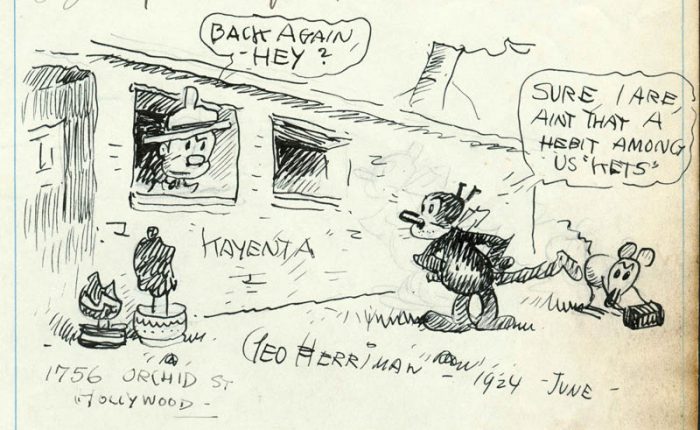
Other notable visitors during that period included painters Ferdinand Burgdorff, Carl Oscar Borg, Gunnar Widforss, Frank Van Sloun, and Marjorie Thomas; cartoonists Tom McNamera, A. E. Hayward, and Frank King; writers Harold Bell Wright, Irvin S. Cobb, and Ernie Pyle; scientists of many disciplines; and numerous politicians and government officials. Visitors came from all walks of life—some of them recognizable historical personalities, but most of them not. For many of them further research reveals interesting stories, and, in some cases, written accounts of their Kayenta visits.
Early in September of 1934, John D. Rockefeller, Jr. and his nineteen-year-old son, David signed the register. Details of their visit are sparse, but what we do know is that David, a Harvard junior, was returning from an insect-collecting expedition with the American Museum of Natural History near the Grand Canyon and Flagstaff. One night during their Kayenta visit, he and his father were out on the desert with a flashlight looking for bugs when they encountered a thirteen-year-old boy, Irving Perry, and his dog, Rover. Irving had gone out to take food to an emaciated dog he had seen along the road. The Rockefellers learned that the boy was from Kansas City and had hitchhiked to Fredonia, Arizona to visit his grandmother. They had not gotten along, so he was heading back home. He made it as far as Kayenta and arrived there without money, food, a hat, or any prospect of a ride to take him further. John Wetherill detained him from setting out on by foot, and the senior Rockefeller offered to pay for his transportation home. Irving refused to accept this act of generosity as an outright gift and talked the industrialist into accepting a beat-up gun in trade. When asked if he knew who Mr. Rockefeller was, the boy said: “I’ve never heard of him before, but I guess he must be in some good business.”
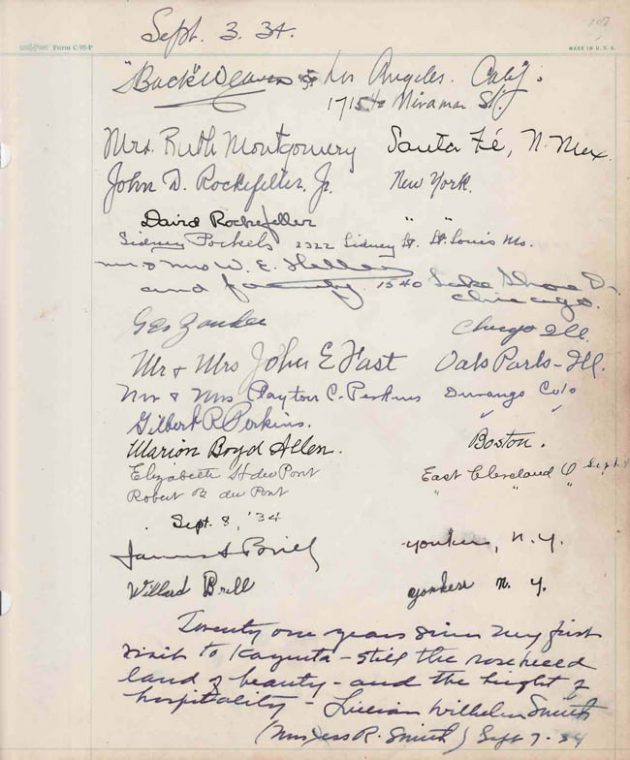
Kayenta seemed to have a particular attraction to some of its young, male visitors. A few months after the Rockefellers were there, word was received that twenty-year-old Everett Ruess of Los Angeles, an up-and-coming poet, writer, and artist, had disappeared in the rugged canyon country southeast of Escalante, Utah. Everett had first wandered into to Kayenta in February 1931 when he was sixteen years old. He was already experienced with roaming and was looking for new places to explore and a burro to carry his gear. After nearly three months of preparation and short excursions, he headed out into the desert. He returned to Kayenta in 1934 and was in and out until August when he departed for the last time. He was last seen in Escalante in November. The mystery of his disappearance has never been solved.
Neither Everett Ruess nor Irving Perry signed the Wetherills’ guest register. However, some of the other boys who stayed at the lodge did record their visits. Eleven-year-old Sonny (Sumner) Babson of Trinidad, Colorado wrote: “I wish that I could stay here for a month for this is the nicest place I have ever stayed.” Johnny Campbell Moore of Greenwich, Connecticut was about eleven years old when he and his mother came, and he gifted his hosts with a sketch.
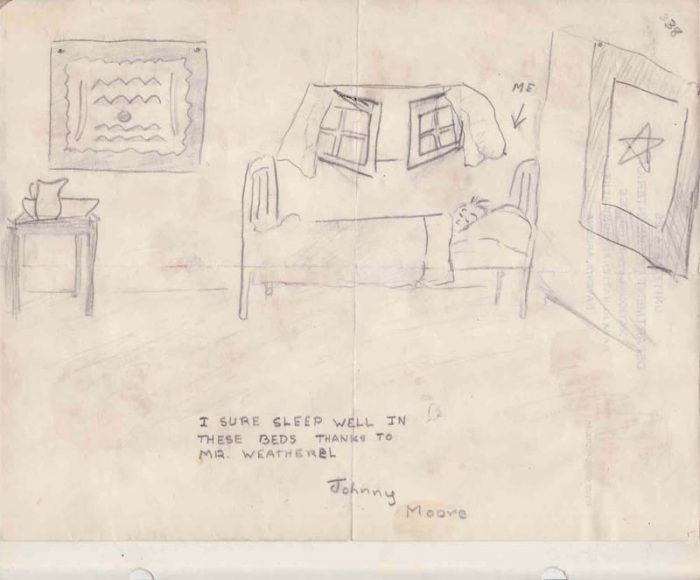
Oliver La Farge was just one of many young scientists who gained direction for their careers in Kayenta. Many artists refined their skills there and discovered new subjects for their creative expression. Countless others, undoubtedly, were inspired to better appreciate nature and carried their new insights home to share with others. And some, such as busy city folks, simply found their visits there to be relaxing respites from their stressful routines. Kingsley Gillespie, owner of the Advocate newspapers in Stamford Connecticut, wrote in the register:
From the Valley of Business Monotony
To the Mountain Top of Inspiration
This is the meaning of Kayenta
To the weary New Yorker
The Wetherills, their home, and trading post are long gone now, and Kayenta has grown into a thriving community of more than 5,000 souls. Perceptive observers can still find there an underlying, powerful quality that hearkens back to its rich and unique history. Some of the values of the past—friendliness, reverence for nature, and authenticity—have echoed down through the decades and still shine in the lives of some of the residents. In 2010, to celebrate their centennial, community leaders created an outstanding video that captures some of this enduring town spirit.
.
More than thirty years ago, Harvey Leake began researching the history of his pioneering ancestors, the Wetherills of the Four Corners region. His investigations have taken him to libraries, archives, and the homes of family elders whose recollections, photographs, and memorabilia have brought the story to life. His field research has led him to remote trading post sites in the Navajo country and some of the routes used by his great-grandfather, John Wetherill, to access the intricate canyon country of the Colorado Plateau. Harvey was born and raised in Prescott, Arizona. He is a retired electrical engineer.
To comment, scroll to the bottom of the page.
Zephyr Policy: REAL NAMES ONLY on Comments!
Don’t forget the Zephyr ads! All links are hot!


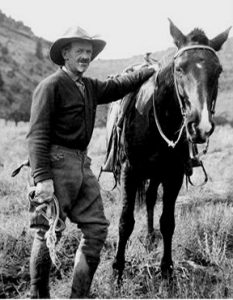


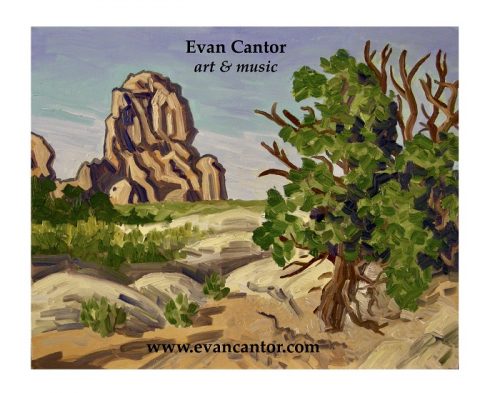

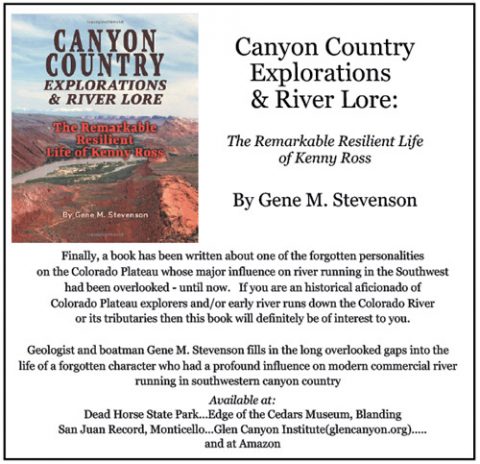


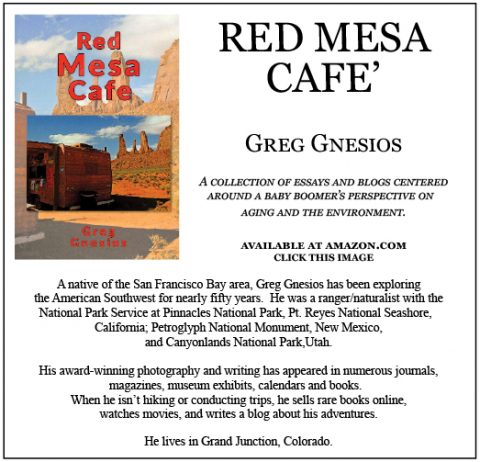
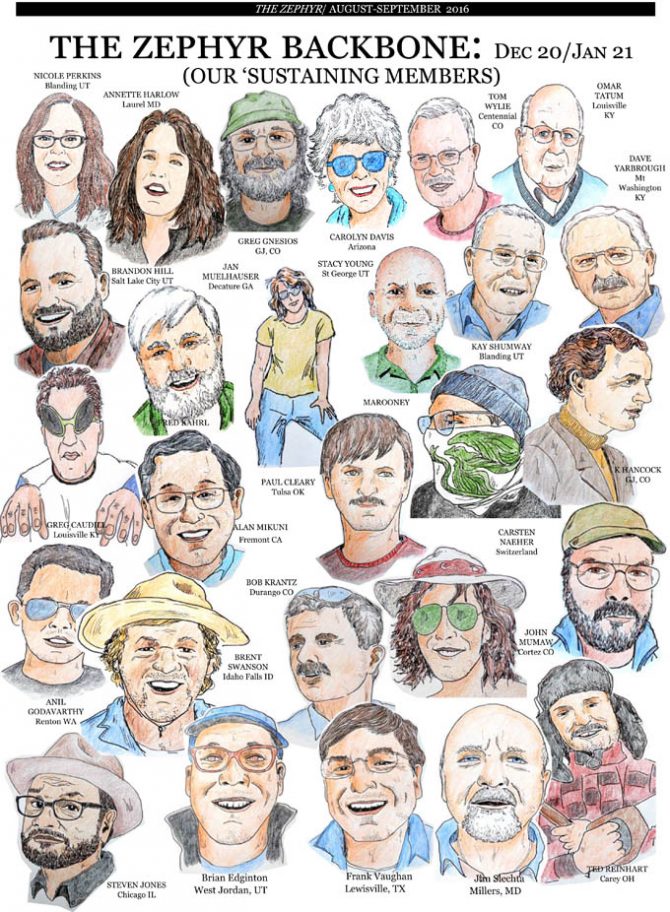
Very well done, entertaining and interesting article. Loved all the special photos and the register art. Amazing account of the many famous and notable guests at the Wetherill’s fine home.
You are great Harvey. I so enjoy your articles and books
Good work, cousin! Thank you for keeping their memory alive.
Fascinating article I so appreciate your research and words describing understanding of Navajo people.
Fascinating information about K-Town. Nizhoni Ahehee
When I first drove through Kayenta in 1963 it still billed itself as the most remote town in the United States because the Kayenta Post Office was the post office furthest from a railroad connection. Today, fifty-seven years later, it is an entirely different place. Certainly not Moab, thank goodness, but bigger than Bluff and still the jump off point to visit Monument Valley and Navajo National monument. I’d like to see an article in the Z about those changes and how they were the result of cutting the Navajo Tribe loose and forming a Township to control their own destiny.
I forgot to mention that everyone who reads this article should also click on the blue ” video” link in the last paragraph and take a look at the short locally produced film about Kayenta. As they say on the Rez, “it’s pretty good alright”.
Another great article Harvey especially liked the video and to see you again. I am not sure when Pam and I will be able to get back to Kayenta but I hope it will not be too long. Perhaps we can meet up for breakfast in Prescott again.
I’ve seen that guest register. It is a treasure! Thanks for sharing, Harvey.
My name’s BLACKHORSE MITCHELL, author of [Miracle Hill] publisher by UA Press, I’m a Navajo of Shiprock, NM & reader of the Wetherill. I would like to contact [HARVEY LEAKE] in time ahead or any of the Wetherill.